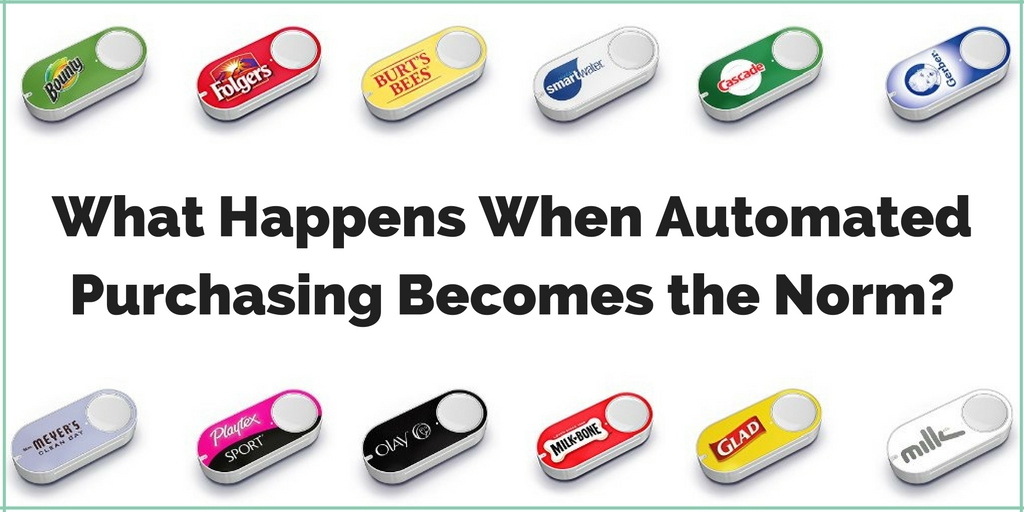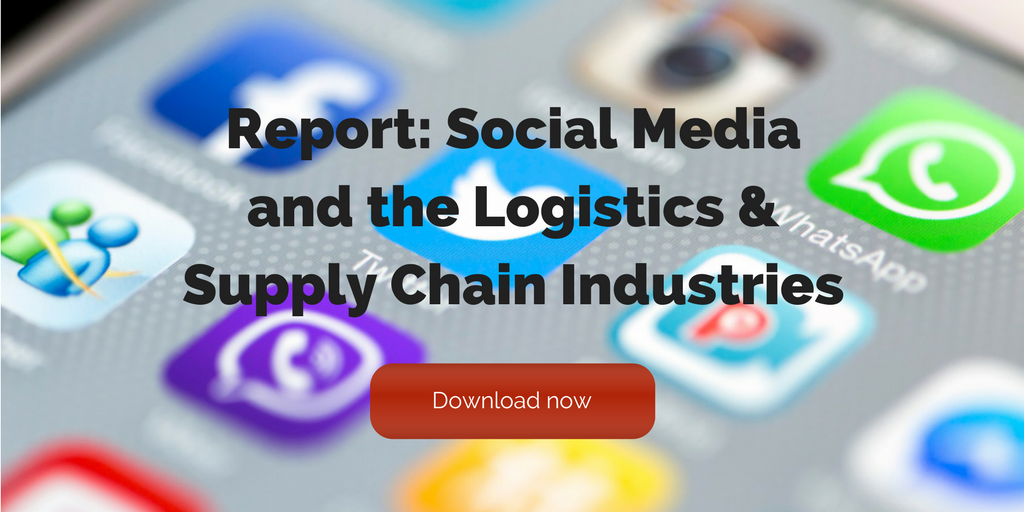
by Fronetics | Nov 21, 2016 | Blog, Content Marketing, Logistics, Marketing, Supply Chain
Fronetics invites you to participate in a survey on how companies in the logistics and supply chain industries use content marketing.
If there’s one thing we can say about the ever-changing B2B marketing climate, it’s just that: it’s ever-changing. Keeping pace with shifting industry trends, innovations, and challenges can be daunting. But knowledge is power when it comes to creating a vital and robust marketing strategy.
In 2014, Fronetics decided it was time to gather hard data on how logistics and supply chain companies were using modern marketing tools like content. We conducted an industry-wide survey, gathering a valuable snapshot of the marketing landscape.

Now it’s time for another look at the data. So Fronetics invites you to participate in our 2016 surveys on content use in the logistics and supply chain industries. The survey takes about 3 minutes to complete, and no personal or company data will be reported. Additionally, you can indicate your preference to receive the completed report.
Key findings from the 2014 content use report point to companies using content primarily to build brand awareness and generate leads, with blog posts being the most popular content format. While all respondents reported using content marketing for a relatively short time, the majority had already seen a positive impact on their business.
Fronetics is curious to know, two years later, about the ongoing impact of content marketing. In addition, we’d like to find out if the industry is using content in new ways. Has content use expanded? Are blogs still the most popular format? What challenges are B2B companies facing when it comes to content creation and distribution?
The answers to these and more questions can provide vital insights as you shape your company’s marketing strategy for the future. Especially when it comes to modern marketing techniques, knowledge is power.
Take the content survey by clicking on the button below. Be sure to indicate your preference to receive the results. We look forward to your responses!

Related posts:

by Fronetics | Nov 15, 2016 | Blog, Content Marketing, Marketing
People don’t want to read it. It does you no good. So why are you still using your blog to talk about your business?
It seems like a natural use for your company blog. But I’m here to tell you that writing about your products, services, and business is hurting your blog more than it’s helping it.
You shouldn’t write posts to push certain products. You shouldn’t conclude every post with promotional language about your company and what it does. In fact, your business should be virtually invisible in your blog content.
That may seem counterintuitive to some. But it all goes back to basic content marketing principles: Demonstrating expertise and building trust will drive profitable customer action when the customer is ready to purchase.
Why your sales pitch is bad for business
Today’s consumers have no tolerance for overt, interruption-based marketing. You can probably think of examples from your own life to prove this point.
For example: when you’re trying to find something to watch on TV, how often do you stop on a channel to watch a commercial? Probably never, right? If you’re flipping around, it’s probably because you’re looking for content that is appealing to you, not seeking advertisements.
Or, consider this scenario: You are in the market for a new car. You’ve done extensive research on different makes and models and have narrowed your list down to a choice few. You head to the dealership to do a few test drives. Once there, you are greeted by an enthusiastic salesman. Brushing aside your questions, he launches into his pitch about his dealership’s unbeatable prices and repeatedly pushes a model that you that isn’t what you’re looking for. Turned off by his tactics, you make a quick exit.
Remember those two examples when you think about blog readers and internet browsers. They have their pick of the 27 million pieces of content shared on the internet every day. If they sense a sales pitch, they’ll ex out of your website faster than a Google search query.
What’s more, studies show that B2B buyers are about 60% of the way through the purchase decision-making process before ever engaging with a sales person. That means they are actively avoiding sales pitches in favor of their own research. If your blog is just another avenue to pitch your products and services, your content will fall on deaf ears.
Well, then, what should you write about?
DemandGen’s 2016 B2B Buyer’s Survey Report offers some interesting insight on why buyers end up choosing a particular vendor. After timeliness of vendor response (98%), 97% of respondents said that the winning vendor “demonstrated [a] stronger knowledge of the solution area and business landscape.” Not that the vendor had the most modern products. Not that they got the best deal. That the vendor understood the solution area and business landscape.
That’s what your blog should be all about.
Write about the problems your products solve (without mentioning your products). Write about the kinds of businesses you can help (without mentioning your name). Use content to demonstrate your expertise and to inform prospects about the solution area and business landscape in which your clients operate.
See, it’s not about you. It’s about them. They want a vendor who understands their pain points and how their business operates. If you and your content provide value, offer information, and demonstrate expertise, your audience will come to know you as a trusted source of knowledge.
And that’s who buyers purchase from. Vendors who understand their business. Not those that can only talk about themselves.
So, please, don’t use your blog to push your products or your business. Salesy and self-promotional language will only turn buyers off. Instead, use this platform to show your prospects that you understand their situation, and they’ll come running when it’s time to make a purchase, no sales pitch required.
Related posts:


by Fronetics | Nov 14, 2016 | Blog, Content Marketing, Logistics, Manufacturing & Distribution, Marketing, Social Media, Supply Chain, Transportation & Trucking, Warehousing & Materials Handling
Fronetics is conducting a survey to determine the benefits and challenges of social media for companies in these industries.
Two years ago, Fronetics surveyed a number of individuals working in the logistics and supply chain industries, including those employed by manufacturing, warehousing, and transportation companies. The survey’s goal was to find out how these companies were using social media, and if they were realizing any benefits or encountering any challenges by participating.
Interestingly, 100% of respondents reported having used social media for 5 years or less. Despite this relatively short implementation period, the majority (68%) said that their companies had already realized benefits from participation — primarily increased engagement with customers, increased market intelligence, and increased business intelligence.
As things go in the technology space these days, social media looks quite different than it did two years ago. What’s more, companies in these industries have, presumably, been using these tools for longer. Have a better understanding of social platforms and more opportunities for businesses impacted the benefit to users?
Fronentics is conducting a new survey to find out. We invite individuals working in the warehousing, manufacturing, and transportation industries — or those in other supply chain and logistics fields — to participate.
The survey takes about 3 minutes to complete. Responses will be reported in aggregate, and no identifiable information (individual or company) will be shared.
We look forward to hearing about your experience with social media!

Related posts:

by Fronetics | Nov 10, 2016 | Blog, Content Marketing, Marketing
Just as purchases are becoming more automatic, generating marketing content also needs to keep up with the times.
Automated purchasing systems are more and more in vogue, opening another avenue for strong content marketing to reign.
Did you know with the simple touch of a button, consumers are able to receive boxes of cereal, bags of coffee, and jugs of laundry detergent with hardly a thought? Amazon’s latest offering — the Dash Button — is a branded wireless device that allows consumers to efficiently order products right when they think of it. Customers can strategically place the button in their pantry, for example, so they can easily reorder supplies when reaching for the last bottle of water or opening the last bar of bath soap.
“Subscribe and save” programs available through retail giants such as Amazon and Target are another way to keep consumers stocked with the supplies they need. These items arrive on a pre-set schedule without the buyer even having to think about it. And subscription-based sales models offered by Dollar Shave Club, Starbucks, and Blue Apron keep consumers clicking through, adding big bucks to corporate coffers.
Influencing the preprogrammed bots
The robotization of consumer spending is changing the current model of marketing, advertising and shopping, according to a recent Harvard Business Review article, and marketers need to be prepared for the next level of automation in order to keep revenues streaming.
If this automation crosses into the B2B marketplace, suppliers will face new challenges — including finding ways to affect choices of preprogrammed “bots,” such as Amazon’s Dash Button. In this possible and increasingly likely world, HBR posits that advertising dollars will be diverted from traditional models to building relationships, challenging incumbents, increasing rates of consumption, and influencing marketing algorithms.
One such algorithm analyzes products that are pre-selected as the default brand in the item’s software (think: the scurry to become Apple’s default map program). Fresh and tailored content that even bots can process will be paramount to targeting content to buyers.
Content that educates the people behind the bots
In this future scenario, what can brands do to win business from competitors?
Certainly, it will take a significant effort to persuade a customer to change the algorithm’s default settings to another product or service. Vendors will have to produce highly targeted, personalized content that demonstrates a deep understanding of the customer’s business and how their product or service will better suit their needs.
Interestingly enough, that’s a preference that we’re already seeing among B2B buyers.
In the 2016 B2B Buyer’s Survey Report, 69% of buyers said relevant content that speaks directly to the company is very important, signaling that personalized content packages equate to satisfied customers and potential customers.
Using content to build relationships will continue to be of utmost importance, even in the age of bot-to-bot purchases. Optimize content to include buzz phrases and recognized keywords, and even bots will get the message.
Related posts:

by Fronetics | Nov 9, 2016 | Blog, Content Marketing, Marketing, Social Media
Try these content formats and related tools for B2B social media content that keeps your audience engaged.
Conventional wisdom, careful market research, and common sense are all telling us that social media is transforming the way we do business. We know we should be leveraging these platforms to drive awareness, engagement, and revenue for our businesses. But creating content to share with your audience is actually more difficult than it sounds.
Character limits and the increasingly visual nature of these platforms means marketers are having to get creative with how they engage their audience. Here are four ideas and related tools that can help B2B organizations produce interesting, informative content that is suited to social media.
1) Video
The 2016 Social Media Marketing Industry Report rates the growing prevalence of video among its top findings for the year. It found that 60% of marketers are now using video in their marketing, and 73% are making it a goal to increase their use of video. This trend is for good reason — 64% of business that use video reported that it has led directly to increased sales.
Video is an efficient, visually appealing way to present your content in an imminently shareable format. Here are some online tools to help you create effective video content for your business.
- PowToon: A tool that guides users through the creation of animated videos and presentations, PowToon boasts an approachable interface and minimalist design that makes it simple for marketers with limited video experience.
- Magisto: Ideal for creating videos with emotional impact, Magisto features tutorials on creating video for your business, and allows users to create highly customizable video content through a simple interface.
- WeVideo: Featuring advanced video-editing tools with a simple interface, WeVideo is a cloud-based collaborative video editor that allows users the convenience of cloud video storage.
- Wideo: Allowing you to create videos in minutes, Wideo offers a variety of plans aimed toward working with your existing marketing strategy.
Creating your video is just the first step. Here are some places to upload and share your content:
- YouTube: The titan of video sharing services, YouTube allows for public and private upload, and gives users free access to analytics tools for their videos. Along the way, take a look at these valuable tips for getting more views on your YouTube videos.
- Vimeo: With a similar platform to YouTube, Vimeo is ideal for video sharing, discovery, and generating creativity.
2) Infographics
Social media platforms are becoming increasingly visual. A well-designed infographic makes your content visually appealing and delivers your message in a clear, easily digestible format. A recent report from eMarketer and the communications firm Lewis found the demands of social media and the format’s high engagement rates are key reasons for its use.
Here are some online resources that let you create and share infographics:
- ly: This site features a vast array of templates, which you can easily edit and customize and share immediately on social media platforms.
- Piktochart: With an easy-to-navigate interface, Piktochart allows you to create intricate, design-rich graphics, complete with icons, images, charts, and interactive maps, and publish them directly to social media platforms.
- Canva: This site allows for quick creation of infographics, as well as presentation covers, social media images, online advertisements, and flyers.
- Visme: A simple interface, Visme allows you to translate your ideas into engaging infographics, presentations, reports, and more. You can share your content online as a URL or on social media, embed it on your website, or download it.
3) Podcasts
The 2016 SME Report identifies podcasting as a relatively untapped way for marketers to engage with social media audiences. The audience for podcasts in the United States alone is close to 60 million people, making this medium a significant opportunity for businesses to engage with potential clients.
Here are some tools that can help you create quality audio content:
- Audacity: This open-source audio software lets you record audio, convert tapes and records into digital recordings, and add your own audio effects.
- Podbean: This tool lets you quickly create and share professional podcasts, no programming knowledge necessary. You can publish them directly to social media platforms.
4) Slides
If you have a lot of dense, industry-specific content that you want to get out to your audience, presentations are ideal. Breaking up your content into slides lets you get the information to your network in an engaging and visually appealing way.
Here are some tools that help you create and share professional presentations:
- SlideShare: LinkedIn’s platform lets you build, upload, and edit presentations, and share them on social media.
- SlideBoom: Ideal for converting PowerPoint presentations to Flash, SlideBoom lets you share your presentations with your target audience.
- Prezi: This tool is available for download or as an online editor, and it allows you to add animations to your presentations and share your content on Twitter, Facebook, and LinkedIn.
Social media has changed the way businesses engage with their target customer base. Embracing these tools is key to creating and maintaining an active and loyal audience.
Related posts:


by Fronetics | Nov 7, 2016 | Blog, Content Marketing, Logistics, Marketing, Social Media, Supply Chain
Fronetics is conducting a survey to determine how companies in the logistics and supply chain industries are using content and social media.
Have you ever wondered how your competitors, customers, and business partners are using modern marketing tools like social media? Are you curious how many companies like yours have a blog, how often they publish, and, more importantly, how many are generating new business from it?
Fronetics was curious about these questions and more. So we conducted our first industry-wide survey back in 2014 to learn how logistics and supply chain companies were using content and social media as part of their marketing programs.
The results were very telling. Though all reported leveraging these tools for only a short while, the majority had already seen a positive impact on their business. To read the full reports, click below.
Well, a lot has happened in two years. And, once again, Fronetics would like to take the temperature of the industry to see how the use of social media and content has changed (or stayed the same). So we are launching a new survey for individuals working in the logistics and supply chain industries to weigh in on how their companies are using these tools today.
Each survey takes about 3 minutes to complete. Results will be reported in aggregate, using no personal or company information from respondents. Those wishing to receive the completed report can indicate this preference during the survey.
Please click the buttons below to take our surveys. We look forward to hearing your responses!


Related posts:











